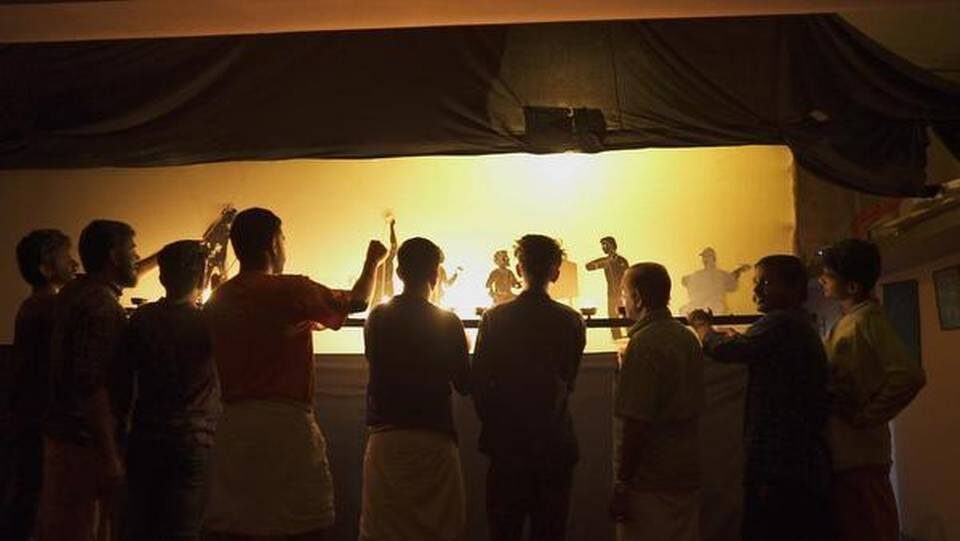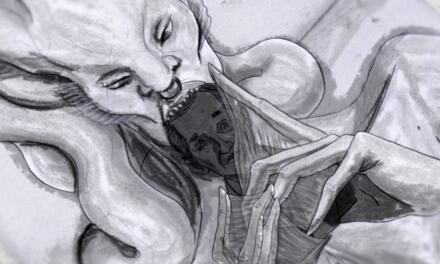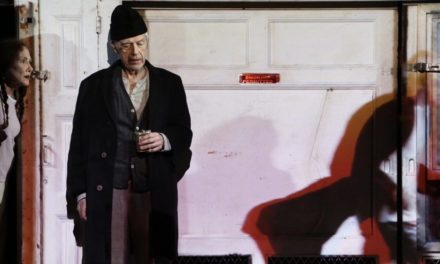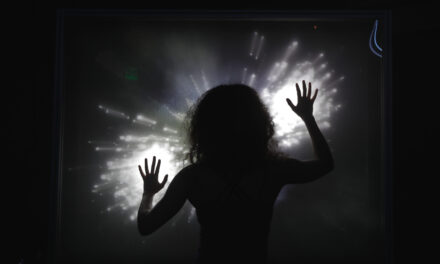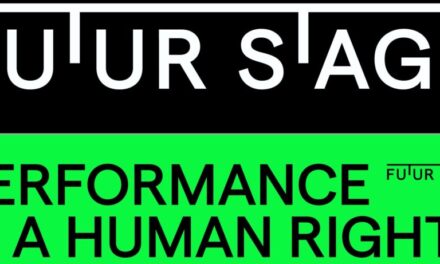“The use of Kerala’s traditional puppetry in a music video by director Emcy Joseph throws open a world of possibilities for the art form.”
Kochi’s metro train gliding over tracks, a traffic signal, the Biennale, a Royal Enfield motorcycle, or for that matter a football match do not feature in Tholpavakoothu, a form of shadow puppetry traditionally performed in Kerala temples. Director and ad filmmaker Emcy Joseph made an unusual decision when he chose to use Kerala’s art form in his music video, “Mindi Meettam.” The video is receiving rave reviews for its crossover appeal.
Conventionally, Tholapavakoothu uses leather puppets to tell stories from the Kamba Ramayana.
“COVID-19 protocols place restrictions on filming with one having to work with a reduced crew. It made me think of alternatives,” says Joseph on the usage of the medium. With this video, the director of the Malayalam film Vikruthi turns singer and composer. This is his maiden song professionally and the lyrics are by Shahul Mezhathur.
Emcy Joseph | Photo Credit: Special Arrangement
The song required more people to communicate a sense of camaraderie despite all that is being missed due to the pandemic — busy roads, people, the sights, and sounds. “I wanted a medium that could express movement, show things that move,” he says, disclosing that he did toy with the idea of using sand art and decided against it because of its controlled movements.
Kerala’s Tholpavakoothu in a modern avatar in a music video. Photo from the original article.
He zeroed in on Kerala’s shadow puppetry and its practitioners in Kerala at Tholpavakoothu Kalakendram, Palakkad.
“It was a new, modern experience for us as well,” says Rajeev Pulavar, a member of the team of puppeteers who collaborated with Joseph. Using this form in a music video came with its set of challenges: the first was if it could be done. Especially with its references to modernity, football players and their movements were a challenge,” Rajeev confesses.
Joseph concurs: “The primary concern, on both sides, was ‘will it work?’” The concept demanded an entirely different set of not only puppets but also a new repertoire of movements. Rajeev agrees, “Each minute movement had to be shown. We were making adjustments even as filming was on.”
Since making puppets out of leather takes time, cut-outs of the metro train, football players, and mobile phones were fabricated out of thick paper and board. “We used leather for a few, and are now converting more from this into leather to use it for other projects,” Rajeev says.
The filming was done at Palakkad, at the Tholapovakoothu Kala Kendram’s theatre over the course of 24 hours, with seven puppeteers working in tandem. The entire process — from making puppets to the final video — took a month. The time Joseph spent on the project helped him understand the possibility of the medium and the scope of puppetry.
A New Telling
Rajeev Pulavar hails from a family of practitioners of the art form, in the tradition for the last 13 generations. His father, Kalashree Ramachandra Pulavar, a Sangeet Natak Akademi award-winning artist, led the team. His grandfather, also a Sangeet Natak Akademi award winner, KL Krishnan Kutty Pulavar introduced the capsule form of tholpavakoothu for the stage, encapsulating the 10-hour long performances to smaller formats of an hour or an hour-and-a-half for stage.
“Although the art form has moved out of temples and is performed on stages, being used in a music video was a new experiment. It has been adapted to tell secular stories, theatre and for Government awareness campaigns such as COVID-19 and ‘Break the Chain,’” says Rajeev.
With post-pandemic restrictions, content creators are on the lookout for alternative and traditional art forms such as this. Joseph feels this is a viable option.
“The use of traditional art forms works on two levels — it would generate employment for the practitioners and the cost would be cheap. In normal circumstances, the art is confined to temple festivals, with most of the revenue coming from there. What about a situation like now? You can create authentic animation using puppetry,” Joseph adds.
Rajeev says “As long as puppetry was seen as a traditional, narrative-based art form, people saw limited potential. But this video has changed the perception. People see it as an effective medium of visual communication.”
This article was originally posted at TheHindu.com on September 10th, 2020, and has been reposted with permission. To read the original article, click here.
This post was written by the author in their personal capacity.The opinions expressed in this article are the author’s own and do not reflect the view of The Theatre Times, their staff or collaborators.
This post was written by Shilpa Nair Anand.
The views expressed here belong to the author and do not necessarily reflect our views and opinions.

